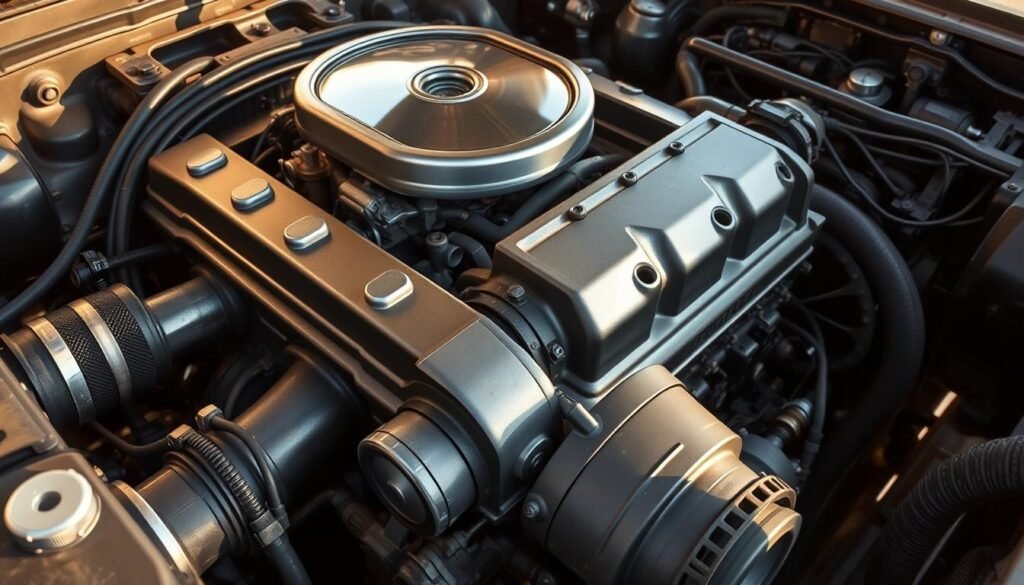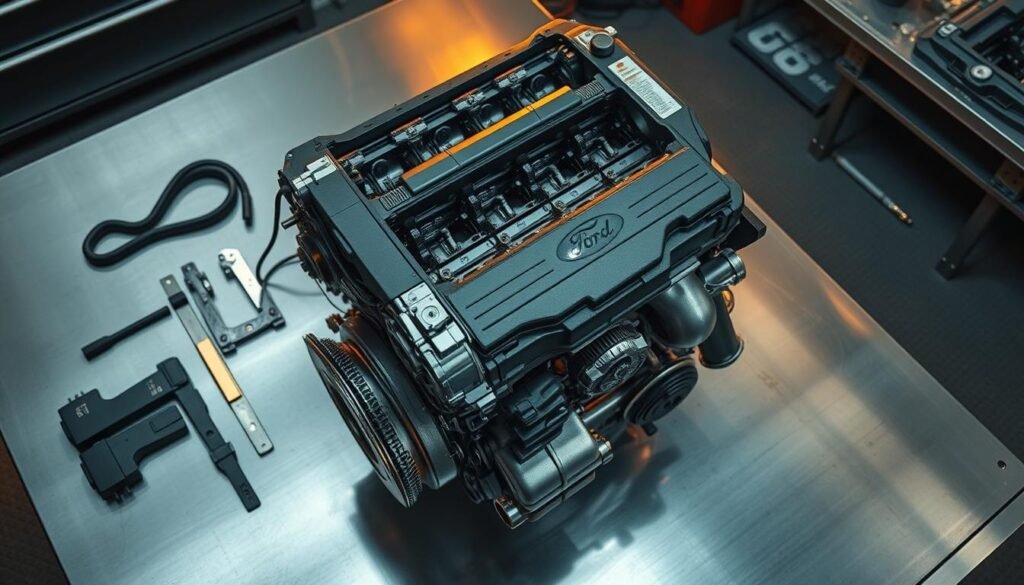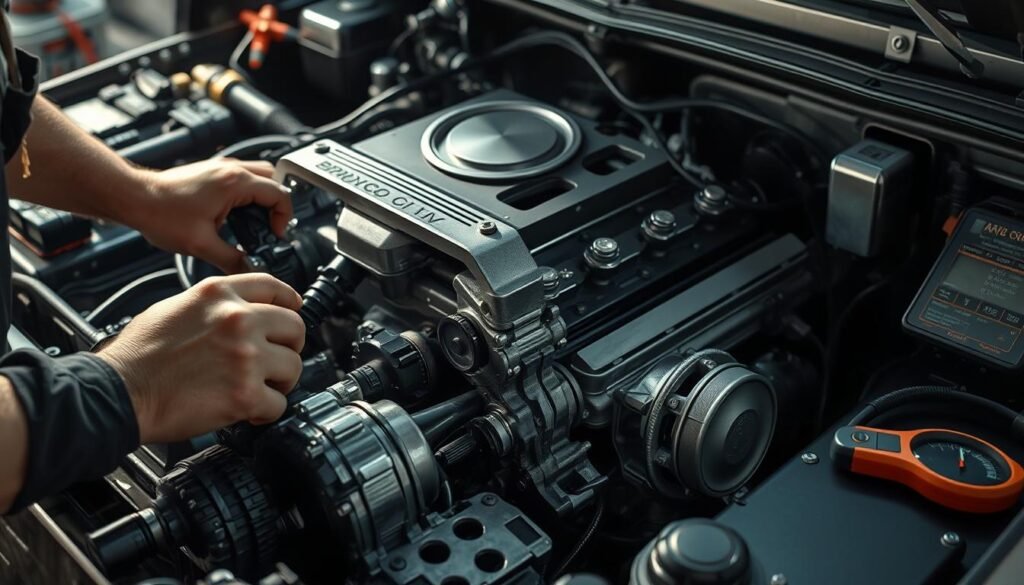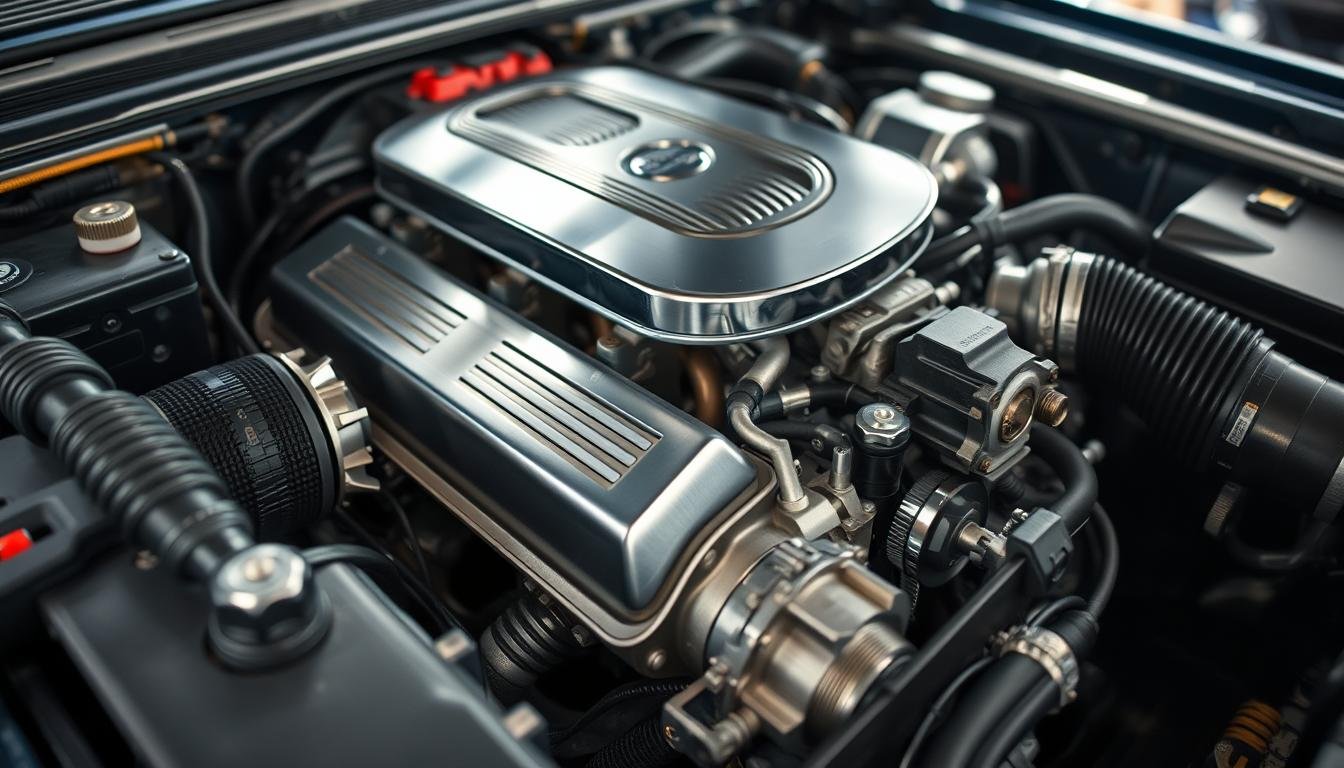How To Solve Ford Bronco Engine Problems? Essential 7 Issues & Solutions
Do you have Ford Bronco engine problems? You’re not the only one. A lot of owners talk about Ford Bronco engine issues.
This often happens with the 2.7-liter V6 EcoBoost engine. Issues like valve problems and turbo wastegate failures can mess up your drive.
They also can cost a lot to fix if you ignore them. We’re going to look into these issues and show you how to fix them. Knowing how your engine works is key to avoiding big problems later.
You’ll recognize engine trouble signs and learn effective solutions. Stay with us to learn how to keep your Ford Bronco running well.
What is The Ford Bronco and Its Engine Options?
The Ford Bronco offers exciting ford bronco engine options for all kinds of drivers. You can pick from the 2.3-liter EcoBoost four-cylinder engine or the stronger 2.7-liter EcoBoost V6.
The first one is great for everyday driving and light adventures off-road. The second gives more power and torque for those who love exploring tough terrains.
When you know the ford bronco specifications, choosing the right model is easy. Both engines use the latest technology, yet remind us of Ford’s rich history.
Whether you like saving fuel or going fast, there’s a Bronco for you.
A Brief History of The Ford Bronco
The Ford Bronco started in 1966 and became a top off-road vehicle quickly. It wasn’t just a car; it was a way to live for those loving the outdoors.
Its design was both useful and stylish, perfect for people who wanted a tough, flexible vehicle. Through the years, the Ford Bronco changed its look but kept its strong spirit.
It came back in 2021 after a 25-year break, exciting many fans. This new version honors the original but has the latest tech, better performance, and more comfort.
The Ford Bronco is made for rough ground and has parts like roofs and doors you can take off.
This, along with its strong past and constant updates, shows why the Bronco’s history is something to cherish.
Common Ford Bronco Engine Problems
The Ford Bronco, known for its rugged performance and off-road abilities, often faces engine challenges.
Exploring the typical issues with the Bronco’s engine can guide you in keeping your vehicle in top shape. Spotting the signs of engine problems early can prevent bigger repairs later.
Overview of Common Issues
Bronco drivers have reported several engine problems, such as:
- Valve issues causing sudden engine stops
- Turbo wastegate failures reducing car power
- Carbon buildup in the intake manifold lowering engine performance
Symptoms To Look Out For
It’s crucial to know the signs of engine problems for quick action. Common symptoms include:
- Car not speeding up even when you press the gas
- Check engine light turning on
- Strange sounds coming from the engine

The 2.7 Liter V6 EcoBoost Engine Issues
The 2.7 liter V6 EcoBoost engine in the Ford Bronco offers exciting power and efficiency. Yet, some owners report problems with this engine, like unexpected total engine shutdowns.
These issues were noted even when the engines had low mileage and were often tied to the valve train. The issues with the engine can seriously affect your driving and safety.
Knowing about these problems helps owners get repairs or replacements sooner, especially while the warranty covers. This action can avoid bigger issues later.

| Issue | Description | Resolution |
|---|---|---|
| Engine Shutdown | Complete loss of engine power during operation. | Seek warranty service for valve train inspection. |
| Strange Noises | Unusual sounds from the engine that signal potential failure. | Report findings to a certified dealer for diagnostics. |
| Loss of Power | Decrease in performance observed during acceleration. | Evaluate the engine components for faults. |
Ford Bronco Engine Problems: Issues & Solutions
The Ford Bronco’s 2.7-liter EcoBoost engine faces various issues. These include valve train failures and turbo wastegate problems.
Knowing these challenges helps owners maintain their vehicles. It lets you fix problems, reduce downtime, and keep your Bronco running well.
Valve Train Failures
Valve train failures in the Ford Bronco are typically due to valve keepers not holding properly. This can cause valves to detach and lead to serious engine damage.
You might have a valve train problem if you notice:
- Unusual noises coming from the engine
- Loss of power during acceleration
- Increased oil consumption
For successful ford bronco engine repair, early diagnosis is key. Look for DIY fixes or professional help. Checking the parts regularly prevents more issues.
Turbo Wastegate Problems
The turbo wastegate is crucial for controlling boost pressure. If it fails, you might see less power and poor efficiency. Signs of turbo wastegate issues include:
- Unresponsive acceleration
- Check engine light activation
- Excessive exhaust smoke
To fix turbo wastegate problems, start with simple troubleshooting. Check the wastegate and vacuum connections to find what needs repair.

The Role of NHTSA in Investigating Engine Failures
The National Highway Traffic Safety Administration (NHTSA) plays a key role with the Ford Bronco’s engine issues.
A recent investigation has highlighted the problems reported by owners. They’re figuring out how common and serious these problems are.
Even if only a few people have complained, it could mean a bigger issue. If they find enough proof, NHTSA might recall many Broncos.
This helps keep drivers safe and meets auto industry safety rules. The actions of Ford and NHTSA will be crucial in handling these engine problems.
As the investigation goes on, they’ll decide the next steps together.

| Investigation Focus | Findings | Next Steps |
|---|---|---|
| NHTSA investigation ford bronco | Assess engine complaints and performance issues | Monitor outcomes for potential recalls |
| Engine failure investigations | Examine frequency of reported failures | Collaborate with Ford for data analysis |
| Recall process | Implementation if necessary to ensure safety | Notify affected vehicle owners |
How Ford and Dealerships are Addressing Engine Problems
Ford is working hard to fix engine problems reported by Bronco owners. They are focusing on giving strong ford dealership support.
They also make sure warranty covers the needed repairs. Knowing about these support options helps you deal with any car issues better.
Ford’s Response To Engine Issues
Ford has admitted there are engine problems with some Broncos. They point out that many problems can get fixed under the warranty.
This saves money for the owners. Dealerships are key in finding what’s wrong and fixing it. Keeping in touch with your dealership makes dealing with engine issues easier.
Utilizing Warranty Coverage
It’s important to know what your warranty covers for engine troubles. Ford offers warranties that usually cover parts and repairs for a certain time.
Owners should look at their warranty details to understand their coverage. This lets you act fast to get help without extra costs.
Owner Steps For Diagnosing Ford Bronco Engine Issues
Keeping an eye on how your Bronco runs is key. Look out for signs like odd noises, stalling, or when it feels slow. These signs mean it’s time to act.
Head to a dealer for a proper check-up. This makes sure you catch issues early and use your warranty if you can.
Identifying Symptoms
- Unusual engine noises, such as knocking or grinding.
- Frequent stalling or difficulty starting the engine.
- Decreased power or sluggish acceleration.
- Warning lights illuminating on the dashboard.
Contacting Authorized Dealers
If your Bronco shows any problems, get it checked by a dealer. Dealers will look at your car closely. They make sure everything is checked right.
Let them know exactly what’s wrong for the best fix. Call your local dealer’s service center to make an appointment.
| Symptoms | Next Steps |
|---|---|
| Unusual engine noises | Schedule an inspection to diagnose the issue. |
| Stalling | Consult a dealer for a comprehensive engine check. |
| Performance drops | Document symptoms and contact the nearest dealer. |
| Dashboard warning lights | Seek immediate assistance from authorized service professionals. |
Tips For Maintaining Your Ford Bronco Engine
To keep your Ford Bronco in tip-top shape, regular maintenance is key. This includes routine engine checks and staying informed about recalls.
These efforts will boost your vehicle’s dependability and ensure it runs smoothly.
Routine Maintenance Practices
Keeping your engine in good condition requires consistent ford bronco maintenance. Here are some important steps:
- Change oil and oil filter every 5,000 to 7,500 miles.
- Inspect and replace air filters as needed.
- Check and top off all fluids, including coolant and brake fluids.
- Monitor tire pressure and tread wear regularly.
- Review spark plugs and ignition systems during inspections.
Keeping Track of Recalls
Being aware of recalls is crucial for your vehicle’s safety. To keep up with tracking recalls, you can:
- Visit the NHTSA website to check for updates on recalls related to your Ford Bronco.
- Sign up for notifications from Ford for any recall announcements.
- Keep in touch with your local dealership for any necessary repairs.
Conclusion
Knowing common Ford Bronco engine problems and their fixes helps in solving issues well. Doing regular oil changes and checks boosts engine dependability.
This way, you stop small problems from becoming big, expensive ones. Taking quick action when you notice any signs is key to your Bronco’s longevity.
By using tips from this article for taking care of your Bronco, it stays in top shape. Allowing you to enjoy its power for a long time, without sudden failures.
Being in control of your Ford Bronco’s upkeep leads to improved performance and joy in owning it.
Your effort in staying up-to-date and thorough will enhance your experiences as you take on future journeys in your reliable Bronco.
FAQs
Q: What are the most common engine problems in the Ford Bronco?
A: The Ford Bronco often has issues with its valves, turbo wastegate, and carbon build-up in the intake manifold.
Q: How can I identify symptoms of engine problems in my Ford Bronco?
A: Look for signs like slower acceleration, the check engine light turning on, weird noises, and the engine stalling.
Q: What should I do if my Bronco’s engine suddenly shuts down?
A: If your Bronco’s engine stops unexpectedly, get it checked at an authorized dealer quickly.
Q: How often should I perform maintenance on my Ford Bronco’s engine?
A: Do regular engine maintenance, like oil and filter changes, and check fluids every 3,000 to 5,000 miles, following the maker’s advice.
Q: Are there warranty options available for Ford Bronco engine repairs?
A: Yes, warranties often cover engine repair costs due to mechanical issues.
Q: What is the NHTSA’s role regarding Ford Bronco engine issues?
A: The NHTSA looks into reported engine failures in Broncos to decide if recalls are needed. They act based on how many complaints they get.
Q: Can I handle repairs for common engine issues myself?
A: You might fix small problems yourself, but see a pro for big engine issues to avoid more damage or risks.
Q: How can I stay informed about recalls or engine issues affecting my Bronco?
A: Check the NHTSA website regularly for the latest on recalls and safety news about your Ford Bronco.







